There’s a lot of confusion about the encaustic tile trend, so I decided to do my research and let you know what I learned. The popular tile we are seeing all over the kitchens and baths may be either cement or ceramic. I understood that the cement versions are actually “encaustic,” while the ceramic ones are simply ceramic versions of the look. That cement tiles are the real thing, and ceramic ones are essentially knock-offs.
BUT THAT’S NOT TRUE!
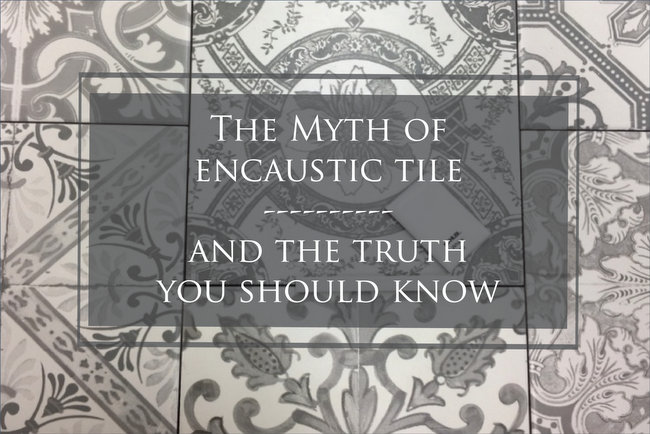
Encaustic Tile
The word “encaustic” refers to a process of painting with a beeswax-based paint and then fixed with heat. The word is from the Ancient Greek meaning “to burn,” which describes the process they used in painting and enameling thousands of years ago.
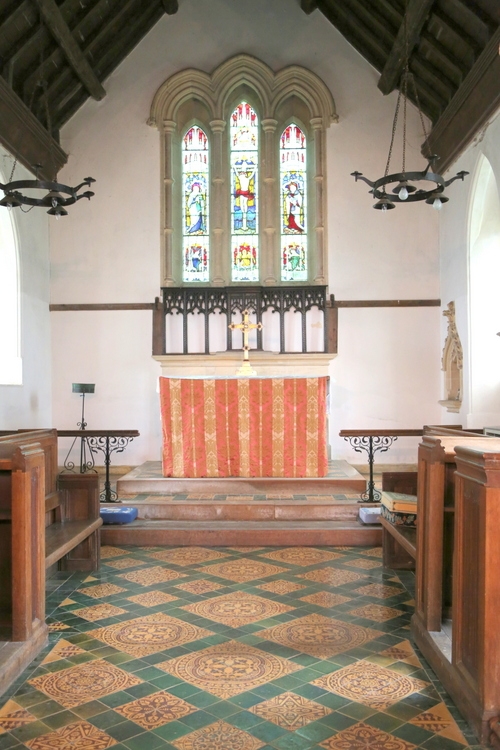
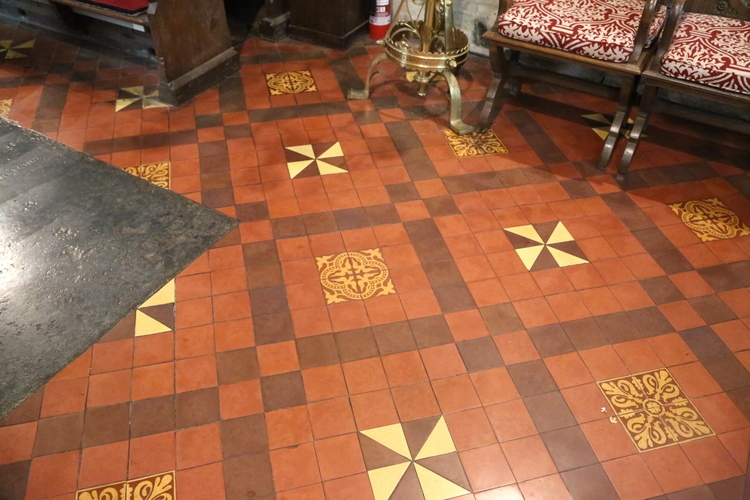

Victorians mistakenly began calling it encaustic tile because it looked like the enamel work of the ancient Greeks. The truth is, it wasn’t truly encaustic because there was no wax involved. It was actually inlaid ceramic tile much like that made in medieval times. But the term “encaustic” has been misused ever since.
Cement Tile
Is cement tile the same as encaustic tile? NO. Cement (or more accurately, concrete) tile is made from Portland cement and is compressed, rather than fired like encaustic tile. Pigmented cement is hand poured into decorative molds until it sets, then the tile is removed and compressed under 2,000 pounds of pressure. It’s not encaustic because it isn’t made of clay, nor it is fired. It is typically made in 8×8 inch squares.
They’re installed in the same manner as ceramic tile, with one major difference. Cement tile needs to be sealed with two coats of penetrating sealer after it’s been set but before grouting. There is dry time in between, and the entire process takes 10+ days.
Cement tile was first made in the south of France in the mid 1800s. It’s also known as Victorian, Mission, or Cuban tile. I suppose both ceramic and cement tiles were popular at the same time in Europe, and likely both referred to as “encaustic” tile.
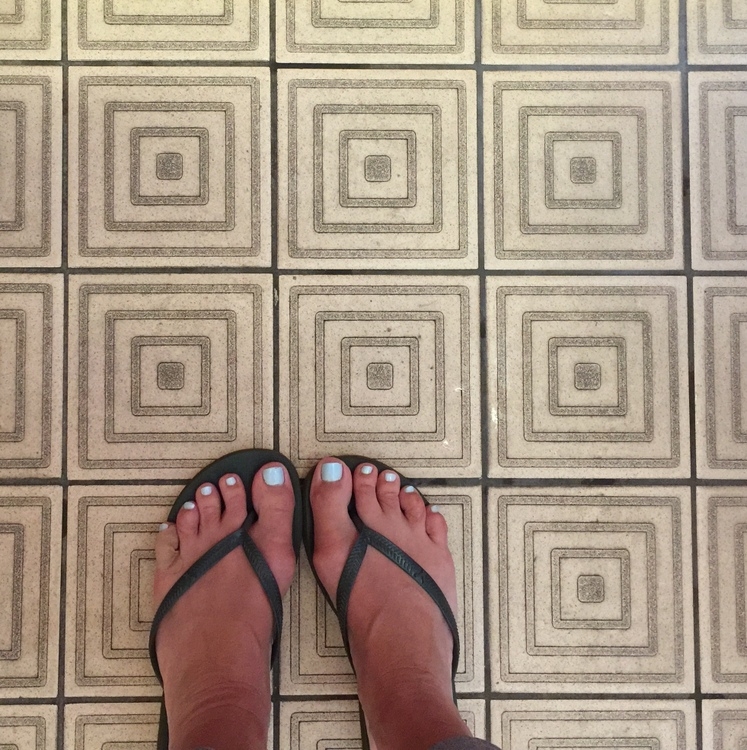 cement tile selfie in Bath, England – photo by Kristie Barnett
cement tile selfie in Bath, England – photo by Kristie Barnett
Ceramic Tile
Is ceramic tile encaustic? NO. But, you could more accurately say that unglazed ceramic tile is most similar to medieval inlaid tile (which were later referred to as encaustic tile).
Ceramic tiles are made with clay and can be either glazed or unglazed, and are fired in a coal or wood fired kiln. Unglazed tiles are true inlaid tile. They are baked pieces of clay whose colors run throughout the material. Tiles are more limited to earthy tones, but some manufacturers mix in color pigments in the clay. Unglazed tiles are thicker and more dense (which means less absorbent) than glazed ones. Glazed tiles are made the same as unglazed tile except that a wear-layer, called a glaze, is fused to its surface by means of high heat. The glaze makes it possible to produce unlimited colors and designs. The glaze can vary from matte, satin, and high gloss.
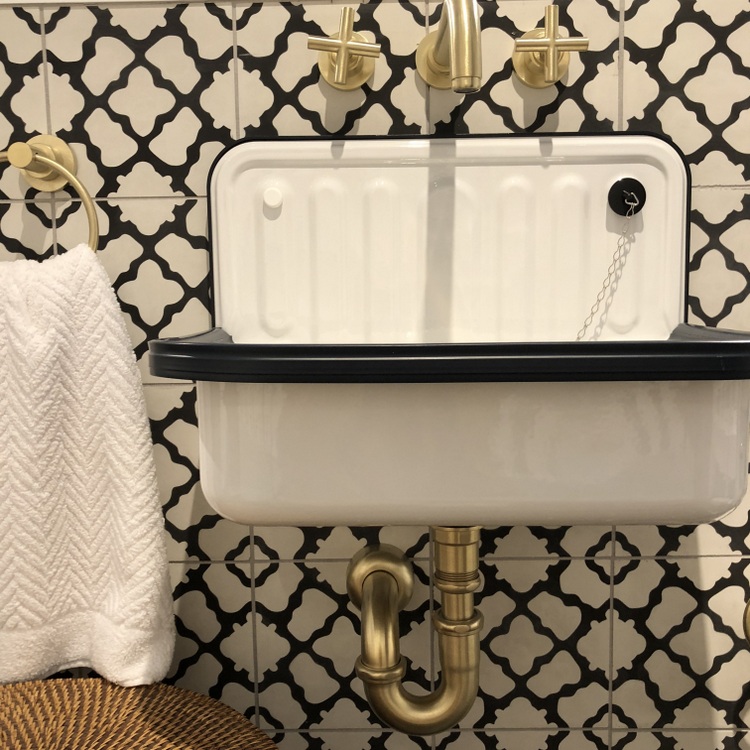 Kenny & Company in Nashville, photo by Kristie Barnett
Kenny & Company in Nashville, photo by Kristie Barnett
Ceramic tiles were once made by hand. Wet clay was put in a wooden mold, and then left to dry in the sun or fired in a small brick kiln. While a few artisans still make ceramic tiles by hand, the majority of ceramic tiles made today go through a process known as dry pressing or dust pressing. So most of ceramic tile made is no longer fired, so does that mean it doesn’t qualify as inlaid anymore? I honestly don’t know.
What I do know is that it’s not likely that ANY of the new tile that are being manufactured now are truly encaustic tile. The term really just refers to a “look” now. The term is used for a tile that is multi-colored and boasts various patterns, symbols, or floral motifs.
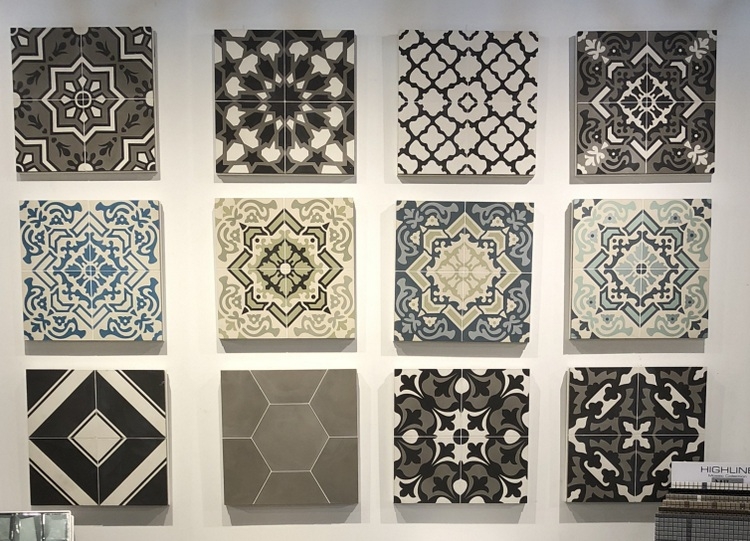 Kenny & Company in Nashville, photo by Kristie Barnett
Kenny & Company in Nashville, photo by Kristie Barnett
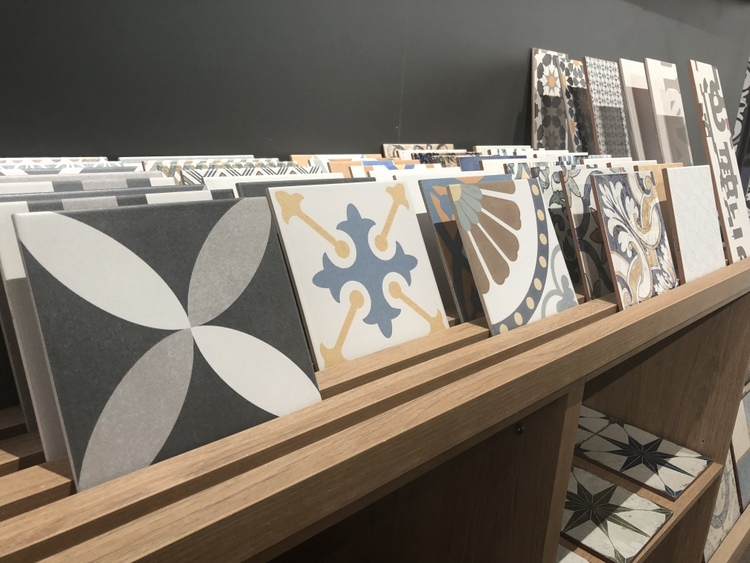 Somertile at the 2018 Kitchen & Bath Industry Show, photo by Kristie Barnett
Somertile at the 2018 Kitchen & Bath Industry Show, photo by Kristie Barnett
Now that you know more than you ever thought you wanted to know about so-called “encaustic tile,” want to know if you should choose cement or ceramic tile for your project and why?
Cement (or more accurately, concrete) has more of an authentic, old-world look. It lasts considerably longer than ceramic (try a couple of generations), is nonslippery, and can be completely customized. Cement acts as a great insulator and is a superior option for heavy commercial use. Cement tile is more expensive ($10-$30 per square foot), quite heavy (an 8 inch tile is about 3 pounds), stains easily, and is prone to etching by acid or harsh detergents. It can’t be used outdoors in areas subject to hard freezes. Cement tile requires an experienced installer and must be sealed on installation in a multi-step process (takes up to 10 days), and requires periodic resealing.
Glazed ceramic is the most stain resistant kind of building product there is. It’s water resistant, hygienic, and is completely fireproof. It won’t fade with light. If it’s glazed, it’s non-porous and is practically stain-proof. Ceramic is reasonably priced and ranges from $2-$12 per foot. It’s less maintenance than cement, and you can choose different glaze sheens for different looks or applications. Glossy tiles chip more easily and can be slippery. They are best for walls and light traffic. Choosing a matte glaze can give you the chip and stain resistance you want while providing slip resistance on floor applications.
You can use unglazed ceramic outdoors in any climate, and it’s a good choice if you’re looking for a slip resistant surface in an area like a laundry room or kitchen where the tile is likely to be subjected to high amounts of moisture. Unglazed ceramics are scratch resistant and provides a similar, earthy aesthetic as cement tile.
I created this chart to make it easier to understand the pros and cons between the various “encaustic tiles”:
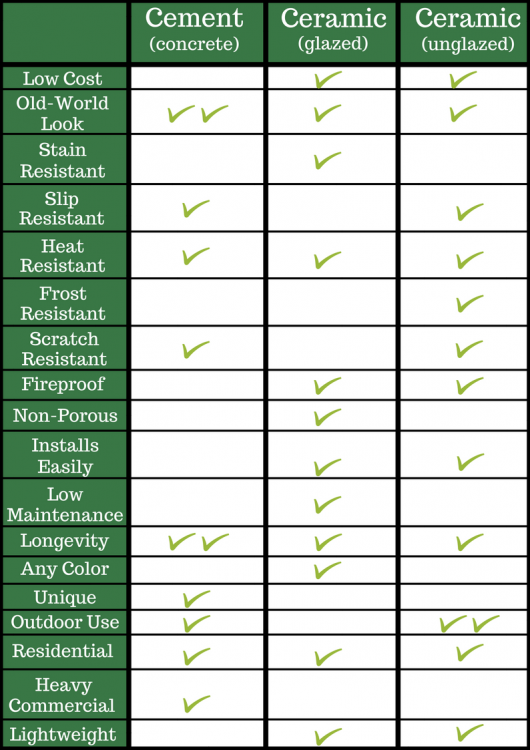
pin this for future reference!
What started off as a simple Google search ended up sending me down a rabbit hole, determined to get to the bottom of things. I’m not entirely sure I did, but if you have any more relevant info, please let us know! Stay tuned for the before/after of a recent kitchen and a upcoming bathroom project using encaustic-look ceramic tile.

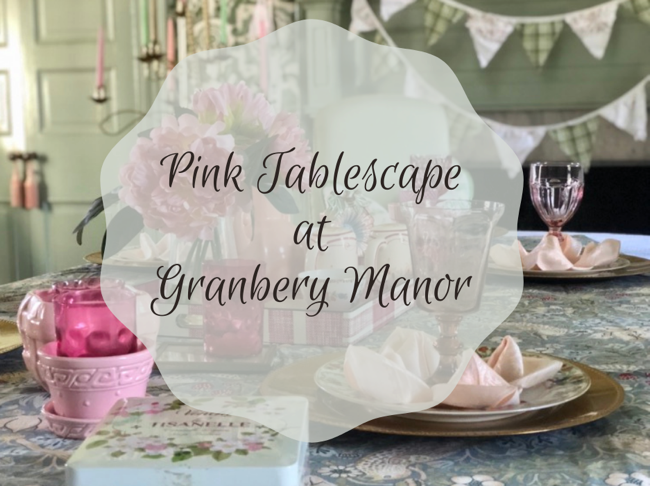







Thank you very much!
You’re welcome, Elle – I hope this was helpful 🙂
Love your tile choice! It is a classic and one of my all-time favorites. I know it was A LOT of work, but I am sure the effort paid off in dividends. Gorgeous. I have subway tiled a kitchen backsplash with Floor Tiling Castle Hill guys but have never tiled a floor.
Wow I had no idea. This was super interesting. I too thought encaustic and cement were one and the same! Either way, I LOVE my cement tile. Would choose it again in a heartbeat!
Hi Lisa,
Ok, so tell me more about your cement tile. How and where are you using it? When did you have it installed and what do you love about it? Thanks for your input!
Amazing and informative post- SUCH great info!!
Thank you, dear!
Thanks for the information Kristie. I’ve always wondered about encaustic tiles and found some more info from here http://www.theantiquefloorcompany.com/History_of_the_Antique_Tile/ I would certainly love to have some of the old original encaustic tiles on my floors!
Thank you for the link to that interesting article about how they were made centuries ago, Michelle! Wouldn’t it be fabulous to have an outdoor stoop or path paved with those tile? Ceramic, of course (now we know)!
This is just the info I needed. Saved me some research. Fabulous post, Kristie. Thanks!
Great! I’m glad it was helpful, Amy 🙂
Don’t make the mistake we made, NEVER use dark grout with encaustic tile. Even after the proper sealing procedure by our contractor, the dark gray grout color leached into the light areas of the tile. It was heartbreaking!!
Wow, thank you for the warning! I’m so sorry that happened to you. Is your tile cement?
This is a fantastic article Kristie! I have pinned your chart as it will be super helpful when working with clients!
Thank you so much, Sheri!
Very interesting! Thanks for sharing your research! My dad’s brother, Bryan, a ceramic engineer, owned American Restoration Tile, which is now run by his daughters. I’m pretty sure they still fire their ceramic tiles in a kiln (which I learned is pronounced “kill” – you don’t say the “n”). My dad worked with him for several years, when they used to import Olde English Tile. It looked similar to the inlaid tiles you showed. The tiles they make at the plant in Little Rock are often custom matches to existing historical tile, which are usually the small colored hexagons or squares that are laid out in decorative patterns, but they make tiles for new installations as well. My dad also used to run a concrete plant, and he would give you a nod for noting that “concrete” is the correct term, rather than cement. 😉
Wow, Jenny – I had no idea you were supposed to pronounce “kiln” that way. Thanks for sharing! I love that you have family that custom matches to existing historical tile 🙂
I’ve been to American Restoration Tile in Arkansas. They are a quality designer and manufacturer..
Thanks, Kristie! I knew I could count on you to educate me on the latest tile trend. I’m going to sound so smart!!
Haha, Gina – thanks!!
Hello Kristie Barnett,
I love this article!!
I manufacture cement tiles, and I can see you’ve put some real research in to your article, It is an unknown fact, encaustic tiles were fashionable in Tudor times and can still be found today all over Britain.
The reason why in the sector we call the ceramic tiles “fakes” is because today ceramics are usually either printed and in some very expensive cases, hand painted. These aren’t as durable as Cement mosaic tiles, because (in the case of good quality cement mosaics), it has a layer of 2-3mm of white cement and soapstone in the surface that can be polished over and over to renew every decade or so. This is why Castles, palaces and houses all over the Mediterranean have cement tiles that are hundreds of years old that look brand new. The tiles have to be treated, as with natural stone, either with very inexpensive products that will give a glossy or satin finish and can be bought in most pain shops, or polishing (as you would with marble) once done they are completely stain proof. They are naturally dried, so they are in fact frost resistant and fire-proof, they are very easy to install because unlike ceramic tiles, they do not need an expansion gap, they can be installed with the same materials as any other tile. I hope this has helped your research.
Thank you again for your lovely article, I wish more people would know about different types of tiles and their amazing history!
Kind regards,
Natasha
Natasha,
Thank you so much for sharing this information and shedding some light on the differences in the tiles. I really appreciate you sharing your knowledge with me and my readers so that we can better understand cement mosaic tiles!
I wonder if one of you might consider looking at a few photos of a flooring system found under a recently demolished hard wood floors in my home.?? I’ve been told it is ceramic, saltillo, exposed aggregate, slate. None of those seem right to me. I’m trying to peel back the layers of my homes history necessitated by a very complicated insurance claim involving an ice machine leak, Hail and then Harvey. All for a home we had just purchased months before we had to move out for reconstruction. I am also just flat out enthralled with the details I’m learning along the way. Would one or both of you consider giving me your opinion?
Hello Christine, would be great. i did get your email but can’t seem to answer to your address. I Love history, and would love to have a look at your pictures! Maybe you can try and send for a different address.
kind regards. I’m sure Kristie could even make an article about your discovery!
That sounds exciting – keep me in the loop!
Hi Christine, I’d be glad to look at your photo’s, I’m a tilesetter & contractor with close to 20 years experience coming back into the trade after a 25 year hiatus. My work being from 1978 to 1995, I may be able to tell you what the subfloor is from my own exp. or just from repairs of older work.
I wonder if one of you might consider looking at a few photos of a flooring system found under a recently demolished hard wood floors in my home.?? I’ve been told it is ceramic, saltillo, exposed aggregate, slate. None of those seem right to me. I’m trying to peel back the layers of my homes history necessitated by a very complicated insurance claim involving an ice machine leak, Hail and then Harvey. All for a home we had just purchased months before we had to move out for reconstruction. I am also just flat out enthralled with the details I’m learning along the way. Would one or both of you consider giving me your opinion?
Hi Natasha, I realize you replied to this article a year ago, but hoping this query finds you. Your reply had better info for me than the article itself, thank you for posting it. I’m a female tile setter & contractor with 20 years experience in the trade, coming back into it now after a 25 year hiatus (joined the police dept. In 1995). So I’m trying to educate myself on new trends & practices, as things have changed, & not always for the better. It sounds as though your writing from the U.K., am I correct? The comment I am really interested in is the one where you state that cement mosaics have a 2-3 mm. layer of white cement & soapstone on the surface, so they can be polished up every decade or so. Could you name for me the tile brands or manufacturers that this is true of, even if they are specific to U.K.? What is referred to as encaustic tile (it’s cement tile) is just beginning as a trend here in Michigan, & I am glad to see it, because if I see one more white subway tile install I will puke. I could babble on about the current practices in the trade that I’m concerned about, like waterproof pans in showers being a real problem, but don’t want to risk boring you. Hope all is well with you in this pandemic situation, & thank you for your time, my name is Maya Reece.
Great post! Most of the non-cement pattern tiles on the market are actually porcelain tiles not ceramic tiles. Also cement tiles have to be mudset not regular thinset when installed because they are thicker than porcelain or ceramic tiles. This is much more labor/material intensive and more expensive. I’m a custom home builder and had to chime in.
Thank you so much for your input, Amy Lynne. The difference in the mudset/thinset is very important to know!
Hi Amylynne, thank you for that info, I’m a female tilesetter & contractor from Michigan, glad to hear of a female custom homebuilder in this business!
Great post – thank you for doing the research and the explanation!
Thanks for this post! It was super informative and I love the way you present the information! Personally, I think it’s important to know the differences between true cement and ceramic and appreciate this! 🙂
Thank you for your comment, Melanie!
Excellent article Kristie! The comparison table in particular was very informative. Two questions:
-Do you know of any glazed ceramic tile manufacturers that have the colorful designs found in cement tiles. Ex: moroccan, andalusian, mexican patterns? I am looking for tiles with such patterns/designs for an outdoor installation.
-are “porcelain tiles” the same as glazed ceramic tiles?
Thanks
Mathew
You are adorable! I can say that with impunity because I know just what you mean, getting distracted easily myself by interesting topics and processes, (and ended up watching a utube video of Latin men making intricate tiles by hand)
Terre – it’s a curse, I suppose! haha!
Thanks. This was great information.
Thank you for the well researched & informative article, Kristie!
We are redoing our deck. The contractor has suggested non slip porcelain instead of wood for the flooring. I can’t find much info about this. Do you have any suggestions or resources that will tell me more about this idea.
Thanks
Very informative post.
However, wanting to take your advice.. I can not find any dealer selling UNGLAZED ceramic outdoor tile with the encaustic pattern, for outdoor use. Does such a thing exist?
HI , does anyone know the ratio, of cement, marble dust etc..?
thanks
Hi Kristie, The current trend of cement tiles and use of the word encaustic is really annoying, i was asked awhile back to Co-author an article on Houzz about cement tiles but with the title encaustic tiles. I can make the encaustic type tiles of the Victorian heyday ,made tiles with Les Robinson at H&R Johnsons to install at Capital Building in the USA and houses of parliament. back in the 1980’s. fun to do but i have always stuck to my core work of restoration. yours is an interesting post, Cheers Steve
Hi Steve,
I’m working in a cement tile factory. If you want to know more info about cement tile, tell me pls. I will let you know anything i can
What might cause a cement tile to get hairline cracks throughout?
They will not if you install as manual.
Hi Robert, I have the same issue that happened within 2 weeks of install. We have new construction. Did you figure out what the cause of yours was?
I’m a female tilesetter & contractor from at Tiling Castle Hill , glad to hear of a female custom homebuilder in this business! I LOVE! it. I’m been procrastinating about my own bathroom makeover but you have given me new hope, inspiration and ideas (the vision board) that I think I may actually get this accomplished in 2021
I love cement tile from your post
Very interesting history,
I am currently working in the Palace of Westminster (Houses of Parliament) in London and the ‘inlaid’ tiles are definitely referred to as ‘encaustic’. The tiles were laid between 1847 to 1852. Many tiles have been removed and kept for the Encaustic Tile Conservation Project. You can now purchase from the Palace giftshop examples of these tiles in presentation giftboxes with certificates of authenticity…. however they are not cheap.
Wow, how amazing to work in a place with so much history! Thank you for sharing.
I make Medieval Inlaid floor tiles if anyone is interested
Concrete is cement with aggregate…these tiles are just cement tiles, there is no aggregate
Thank you so much for doing this research. You have probably saved me and others from making a costly mistake primarily with installation. I seriously doubt the installer I’m using would have known about the sealing process. Thanks again.
You are so welcome, Craig! Thank you for your comment. 🙂
Hello and thank you for the insightful article. We just installed cement tiles and we love them! We did follow the process and they were sealed twice before the grout was applied. However, once the grout was applied (and after the floor was washed with water), the tiles now have a sort of a glaze to them that won’t wash/buff out. They looked matte after the seal was applied but before the grouting. I’m hesitant to put in another coat of seal until I can sort this “glaze” out. Do you have any recommendations?
Thank you kindly!
Ted
Honestly, you don’t really have to reseal cement tile. They are used throughout southeast asia ( my experience with them is in Cambodia and Vietnam- both countries have a heavy French influence). They are durable and I promise you they aren’t treated with particular care. So, while I understand your research, the real world application is quite different. Lay em down and let them be! Amazing floors.